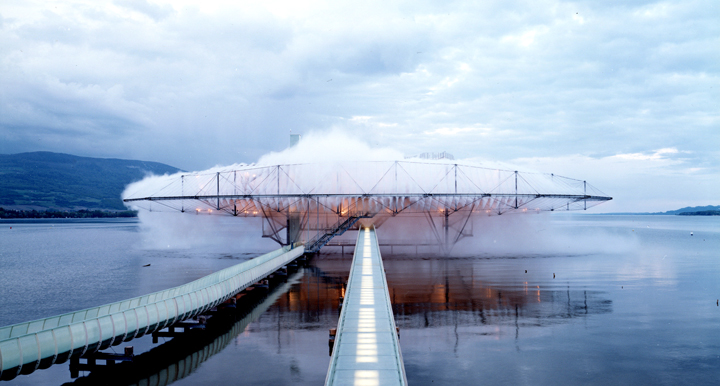Theory of Advanced Architecture and Informational Society – Digital Logics
Student :
Prajakta Panchal
Professor :
Maite Bravo
Technology plays an important role today in strategically combining digital relations and architecture to create environment-responsive buildings. If dealt with wisely, it has the potential to contribute extensively in building sustainable cities.

Blur Building
Blur building is a fine example that creates nature-imitating conditions through advanced technology, which is visually a contrast of immersive architecture. The pavilion that works on the system of converting lake water into fog by using high pressure nozzles generates clouds that are climate responsive. The pavilion does not have a solid elevational appearance. It is more about the user experience wherein digitally charged raincoats that react to other raincoats around them are provided to the users with the aim of creating a place for social interaction. This form of architecture, even though temporary, leaves a long lasting impact on the user in terms of experience.

Digital Logics
The text by Deleuze – Thousand Plateaus – Rhisome, creates an obscure relationship between digital technology and the various layers of the world. Through comparison between the roots (parts that have a start and end, can only be connected to one part of the tree, etc) and rhisomes (underground stems that have multiple branches and can be connected to many other parts to create multiple networks) the text tries to make the reader understand how something should be flexible enough to be connected to various other things. Rhisomes are an alliance between the past and the future of a certain entity and consider only the given moment. They could be compared to maps, since mapping gives you data of the present and is adaptive, while the roots are like a tracing, related to a fixed data – something that has already happened and cannot be changed. The text also states how a book should be a rhizome which takes influence / reference from other books and creates a non-linear alliance between the world and other books.
The internet, as the text describes, is a very good example of rhisomes, because the data from the internet is ever changing, it lives in the present, it can be edited, it is flexible, adaptive and creates multiple networks, thus portraying the logic of multiplicity stated in the text.
Digital logics in architecture could be compared to rhisomes. They could be used to derive interactive prototypes and facades that are adaptive, store energy and respond to climate change.
To build self-sufficient buildings, it is important to understand how digital logics could be used to design buildings that interact with the environment and people.
If form follows energy, digital logics could thus be used to channelize this energy for various sustainable functions using the right technology.